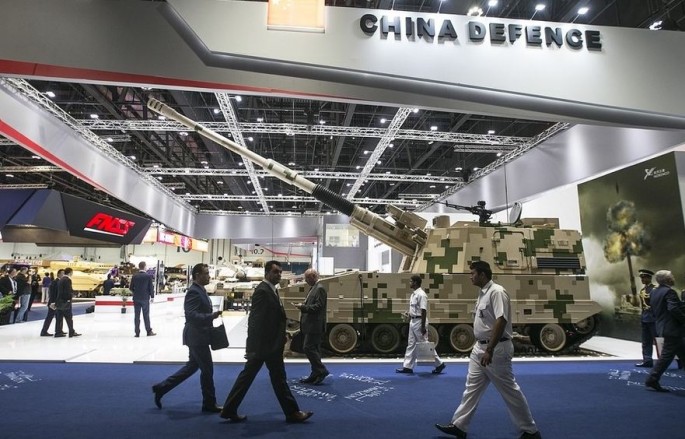China has sought to keep its defense spending to about 1.5 percent of its gross domestic product (GDP) but might have difficulty keeping to this voluntary ceiling because of continuing military provocations by the United States such as the arming of its Asian allies and the continuing "Pivot to Asia."
An op-ed in the website of the People's Liberation Army (PLA) claims despite its military advances in recent years, China remains committed to the three principles enshrined in its arms exports policy.
The first is China's arms exports should be conducive to the self-defense capability of the recipient country. The second is these exports should not damage regional and global peace, security, and stability. The third is there should be no interference in the internal affairs of the recipient country.
China became the third-largest supplier of arms between 2010 and 2014, according to a 2014 report from the Stockholm International Peace Research Institute (SIPRI). China's arms exports jumped 74 percent from 2012-2016 compared with the 2007 to 2011.
What's noteworthy about this data is that only a few countries patronize Chinese weapons, limiting these weapons' worldwide use unlike the United States, which remains the world's largest weapons' proliferator. Over 68 percent of China's arms exports went to Pakistan, Bangladesh and Myanmar.
In contrast, Saudi Arabia was the top recipient of American-made arms from 2011-2015, said SIPRI. Next in line were the United Arab Emirates, Turkey, South Korea, Australia, Taiwan, India, Singapore, Iraq and Egypt. Five of these countries are in Asia, and all these five countries are strategic foes of China.
The United States remained the world's top arms exporter from 2012-2016, accounting for nearly one-third of all exports. She was followed by Russia (23 percent) and China (6.2 percent).
SIPRI also reported that global transfers of arms increased by 8.4 percent between 2012 and 2016 compared with the previous five years, the highest of any five-year period since the end of Cold War in the early 1991.
The op-ed noted China it's "impossible (for China) to turn a blind eye to Washington's role as an enabler in this. Apart from offering traditional military aid to its Asian allies ... the U.S. under the watch of Barack Obama vigorously pushed forward a rebalancing to Asia-Pacific strategy at the risk of provoking China."
The story also said this confrontational approach has also involved "closer defense cooperation with its ... and freer exchanges of intelligence to exports of cutting-edge arms equipment."
The rising tensions on the Korean Peninsula have also prompted China, Japan, Taiwan and India to enhance their military buildup and boost their defense spending.



























